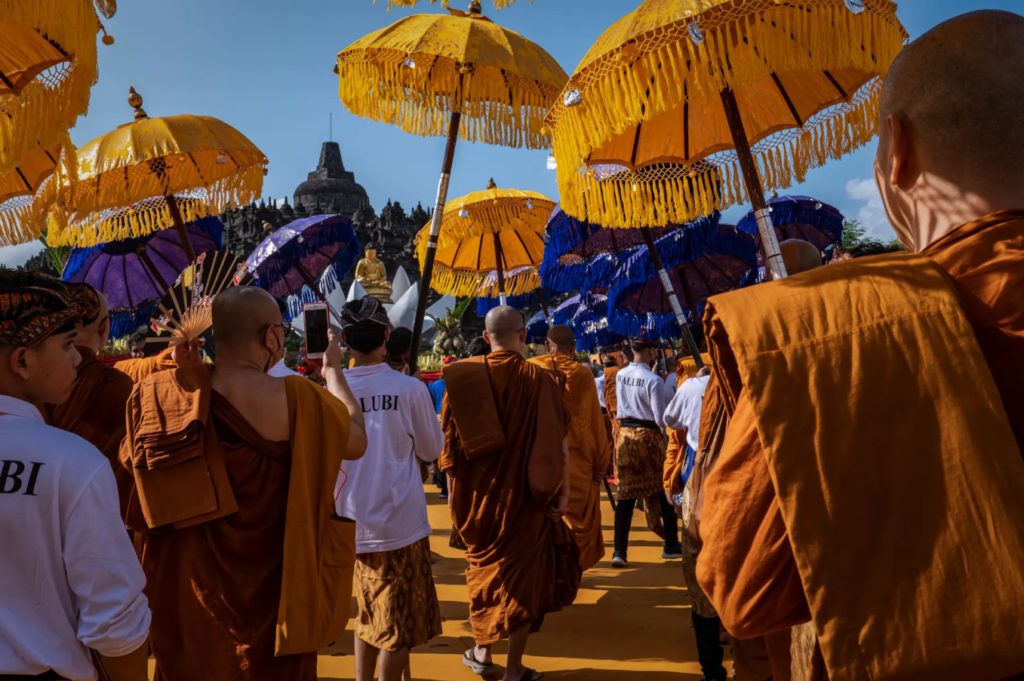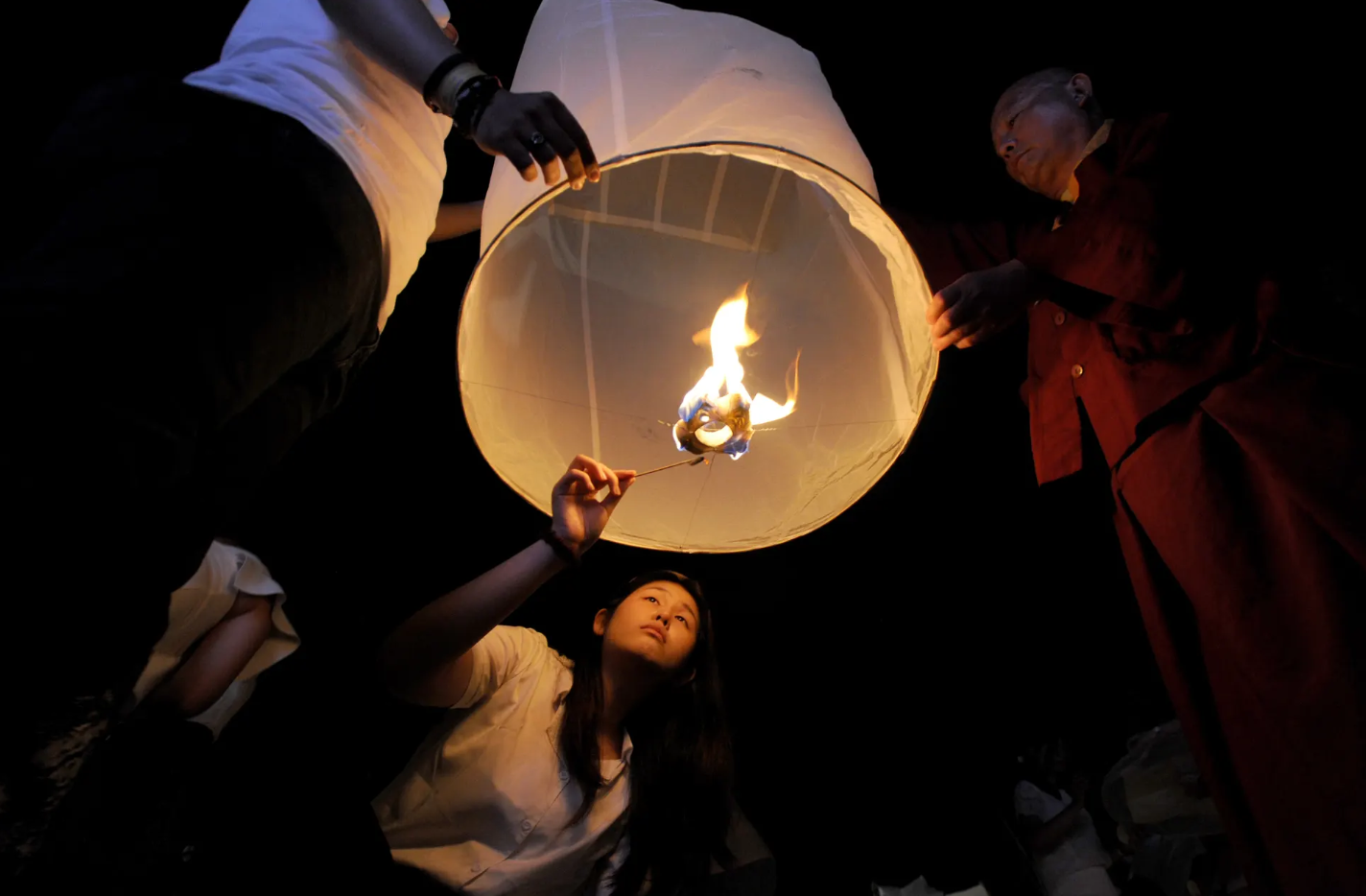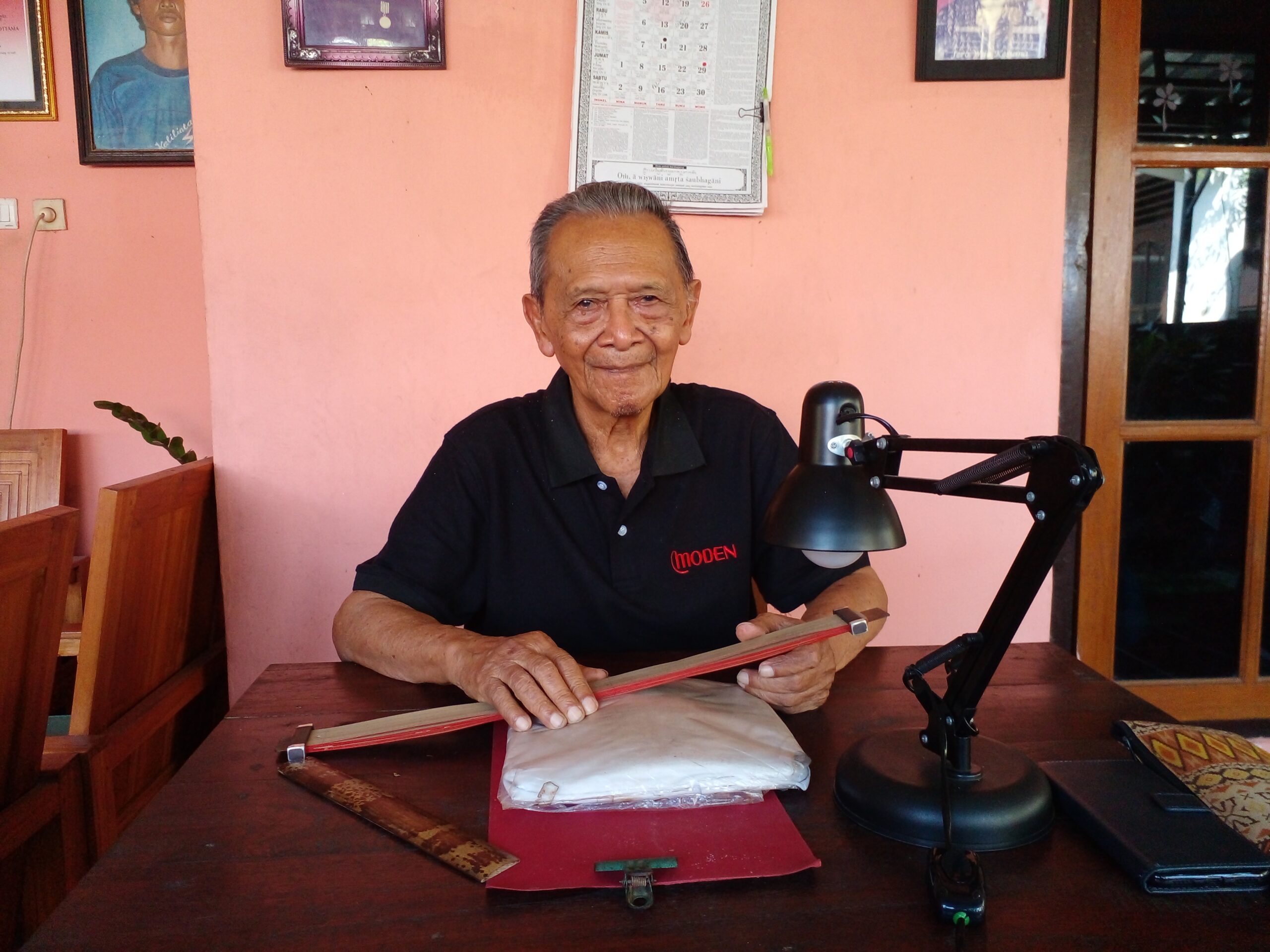Nestled in the lush green landscape of Central Java, Indonesia, Borobudur Temple stands as a majestic testament to Buddhist heritage and architectural brilliance. This iconic structure, the largest Buddhist temple in the world, has long been a symbol of spiritual significance and cultural pride.
In recent years, Borobudur has cemented its status not just as a historical monument, but as the epicenter of Vesak Day celebrations, drawing pilgrims and tourists from around the globe. Every year near the celebrations (except during the Pandemic), the historic site expected to be visited by thousands of visitors and pilgrims.
Borobudur was constructed in the 9th century during the reign of the Sailendra Dynasty and has since weathered the vicissitudes of time, volcanic eruptions, and even temporary abandonment. Despite these challenges, it has remained a focal point of Buddhist devotion and cultural reverence.
The temple’s design is a physical embodiment of Buddhist cosmology, with its tiered structure symbolizing the path to enlightenment. The intricate carvings and stupas that adorn Borobudur narrate the life and teachings of Buddha, making it a living scripture etched in stone.
Borobudur also is evident of the historical glory as one of the earliest teachings that was hold by one of the earliest rulers in Yawadwipa. Borobudur is the biggest and one of the earliest witnesses from the classic era of how this land has evolved over time. It makes me reflect, to call its status as the ‘truest Nusantara’s legacy’ is not an overstatement, because it really is.
The Significance of Vesak and Borobudur
Vesak, also known as Buddha Day or Waisak in Indonesia, is the most important celebration for Buddhists across Asia. These festivals aim to reaffirm Borobudur Temple as a central hub for religious activities among Buddhist followers in Indonesia and beyond.
Held annually during the full moon in May, or at the purnama sidhi, Vesak commemorates the three most significant events in the life of Buddha Siddharta Gautama. It is known as the Tri Suci Waisak. These events are the Birth of Prince Siddharta in the Lumbini Gardens in 623 BC, his enlightenment (nirvāṇa) in Bodhgaya at the age of 35 in 588 BC, and his passing (Parinirvāna) at Kusinara at the age of 80 in 543 BC.

For Buddhists, Vesak is a day of reflection, meditation, and celebration of Buddha’s life and teachings. Observing Vesak at Borobudur is particularly profound, as the temple itself is a monumental homage to these very principles.
Borobudur, a UNESCO World Heritage Monument, is renowned as the largest Buddhist temple in the world. Constructed around a hill, this architectural man’s marvel features 504 Buddha statues and 2,672 relief panels. Located just an hour’s drive from the popular tourist city of Yogyakarta and even closer to Central Java’s capital, Semarang, Borobudur offers an unforgettable experience.
From the top level of the temple, visitors can witness a breathtaking sunrise over the verdant valleys below, gradually illuminating the shadows of stupas that adorn each tier of this magnificent structure.
The resurgence of Borobudur as a Vesak celebration site can be attributed to several factors. Firstly, its historical and spiritual significance makes it a pilgrimage site par excellence. Secondly, the Indonesian government’s efforts to promote cultural tourism have spotlighted Borobudur as a center for religious and cultural festivities.
During Vesak, Borobudur transforms into a vibrant tapestry of spiritual activity. Monks clad in saffron robes lead processions, chanting sacred sutras and offering prayers for peace and enlightenment. The temple grounds become a sea of lights as thousands of lanterns are released into the night sky, symbolizing the liberation of the soul and the spreading of Buddha’s teachings. This breathtaking spectacle not only draws the faithful but also captures the awe of tourists who are fortunate to witness it.
Community and Cultural Impact
The Vesak celebrations at Borobudur are not just a religious affair; they are a cultural phenomenon that fosters community spirit and cultural exchange. Local communities play a crucial role in organizing the events, from preparing offerings and decorations to providing logistical support for the influx of visitors. This collaborative effort strengthens social bonds and enhances the local economy through tourism.
One of the most immediate impacts of Vesak celebrations at Borobudur is the significant boost to the local economy. The influx of thousands of pilgrims, tourists, and spiritual seekers brings considerable business to local hotels, restaurants, and small enterprises. Artisans and vendors selling traditional crafts, souvenirs, and local delicacies experience a surge in sales, providing an economic lifeline to many families.
The event also promotes tourism in the region, drawing attention to other local attractions and encouraging longer stays. This extended interest helps in generating sustained income for the community, contributing to the overall economic development of Central Java.
Moreover, the international attention garnered by these celebrations highlights Indonesia’s rich cultural heritage and its commitment to preserving and promoting it. The event becomes a platform for cross-cultural dialogue and important event to catch many interests, with participants from various countries are executing their very basic human rights as to hold on their beliefs. And no one should be allowed to to challenge such rights especially in a historical site that become the heartbeat of the very long history of this land.
The Vesak celebrations at Borobudur also highlight the importance of environmental conservation. The temple, a UNESCO World Heritage site, requires careful preservation to maintain its structural integrity and historical value. The surge of visitors during Vesak necessitates heightened awareness and efforts to protect the site. Local authorities and community organizations often collaborate to ensure that the celebrations are conducted sustainably and with continuity.
As Borobudur continues to attract pilgrims and tourists for Vesak, it faces the dual challenge of preserving its ancient structure while accommodating modern-day visitors. Conservation efforts are ongoing to ensure that the temple can be enjoyed by future generations without compromising its integrity. Sustainable tourism practices are being promoted to balance the influx of visitors with the need to protect the site.
In conclusion, Borobudur’s establishment as a central site for Vesak celebrations underscores its enduring spiritual and cultural significance. It is a place where history, religion, and community converge, offering a unique and enriching experience for all who partake in its festivities. As Vesak approaches each year, the temple not only pays homage to the Buddha but also stands as a beacon of peace, enlightenment, and cultural unity in an ever-changing world.









What i dont understood is in reality how youre now not really a lot more smartlyfavored than you might be now Youre very intelligent You understand therefore significantly in terms of this topic produced me personally believe it from a lot of numerous angles Its like women and men are not interested except it is one thing to accomplish with Woman gaga Your own stuffs outstanding Always care for it up
Nice blog here Also your site loads up fast What host are you using Can I get your affiliate link to your host I wish my web site loaded up as quickly as yours lol